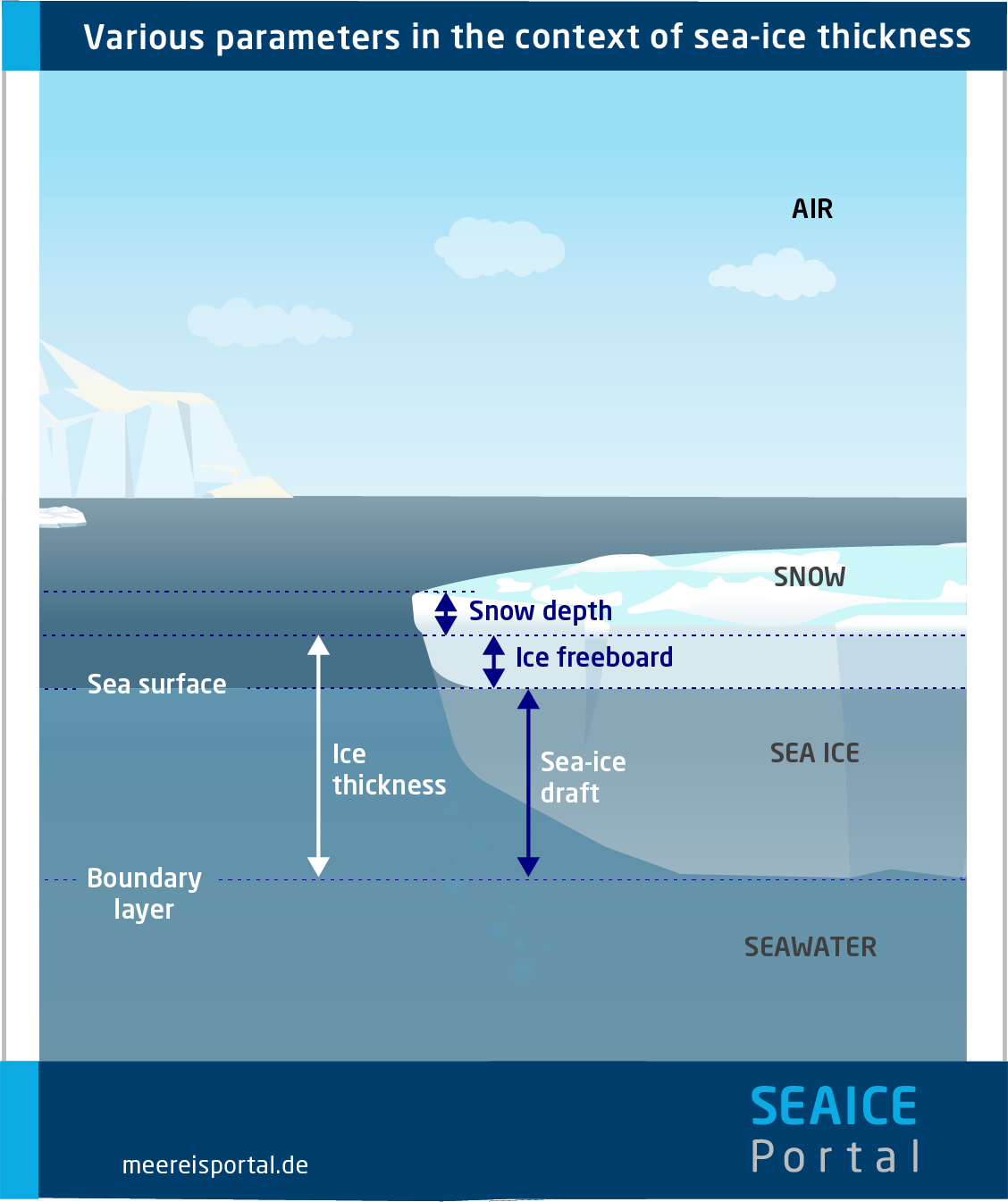Glossary
The English version of our glossary is currently under construction and will be regularly updated.
Ice thickness
Thickness of sea ice.
Sea-ice thickness is a central parameter in sea-ice observation. Knowing the thickness is important so that, with the aid of the sea-ice extent, the total sea-ice volume can be calculated. In water, sea ice floats in a state of isostatic equilibrium; consequently, measurements of its draft, freeboard and surface elevation can be converted into the measurement “sea-ice thickness”. Freeboard refers to the part of the sea ice that extends above the ocean’s surface.
The sea-ice thickness is currently one of the most difficult sea-ice parameters to measure. Data on sea-ice thickness is based on satellite altimetry (deriving the sea-ice thickness from the freeboard), satellite radiometry (deriving the sea-ice thickness from the physical relations between thickness, salinity, temperature and emissivity), aerial measuring systems (provide the combined thickness of the sea ice and snow cover), underwater measurements (deriving the sea-ice thickness from its draft, i.e., the amount of the ice that is below water), and on-site measurements (ice cores). As a rule, ice thickness is presented in metres. Read more about sea ice thickness measurements here.

